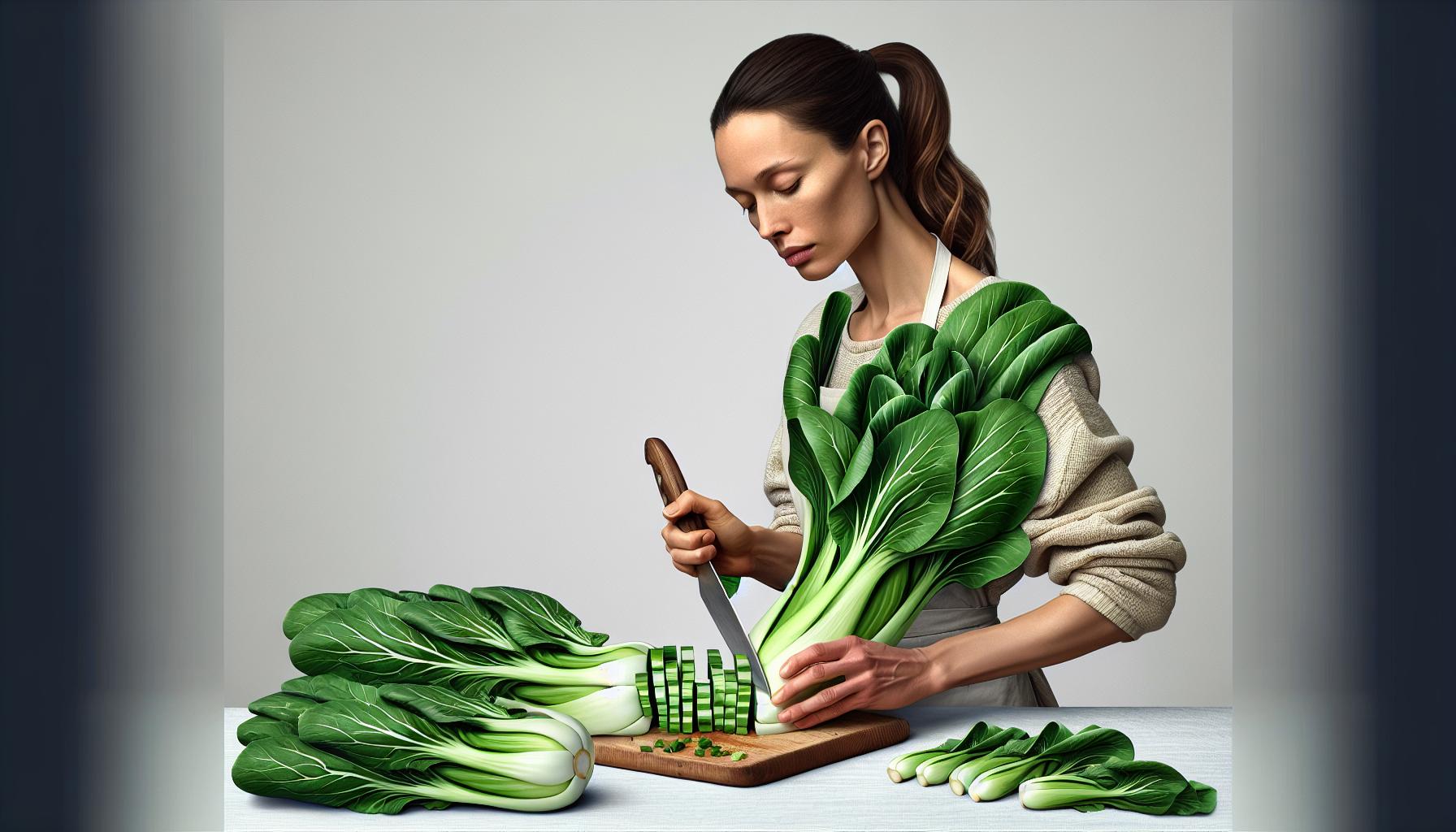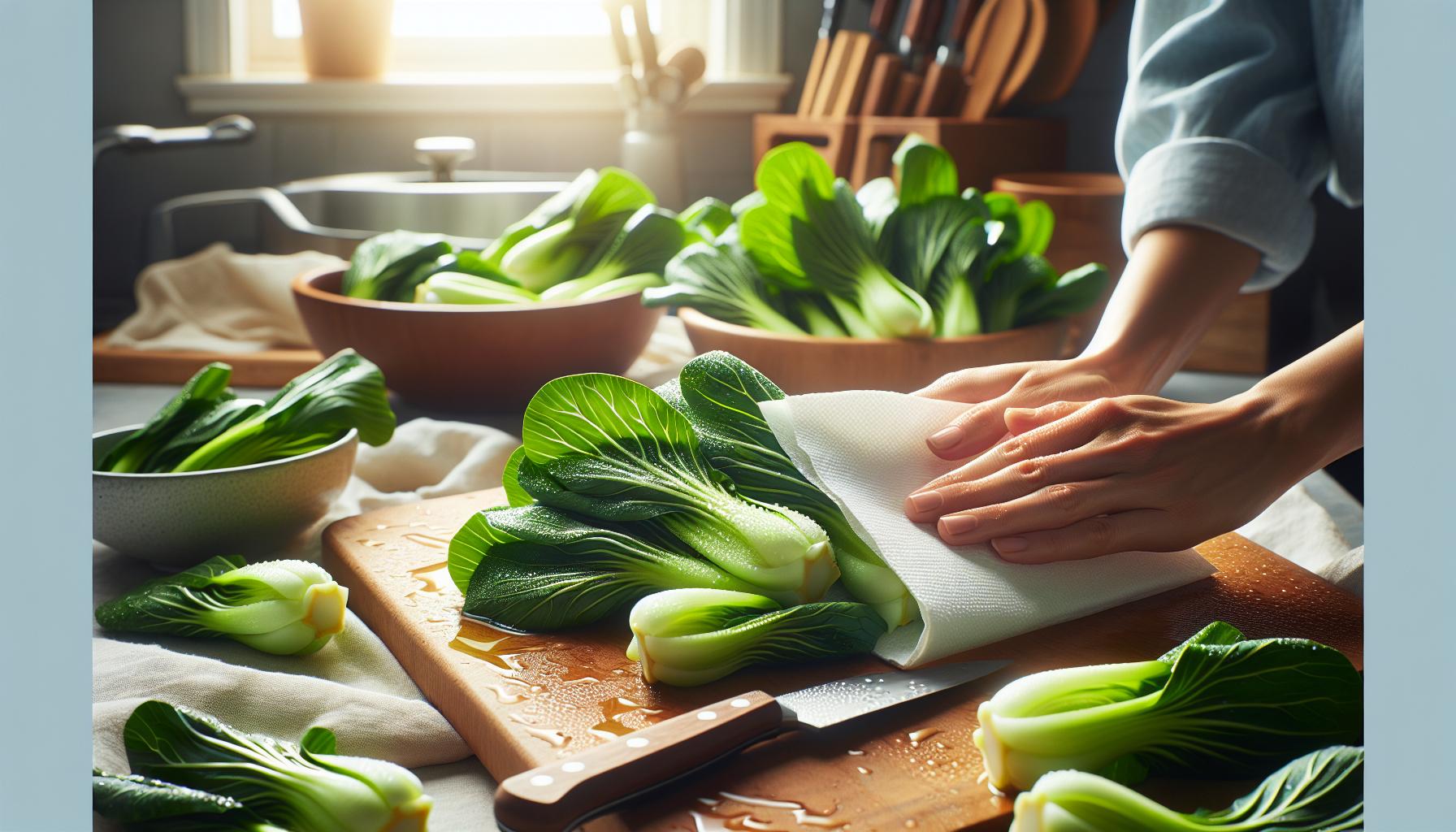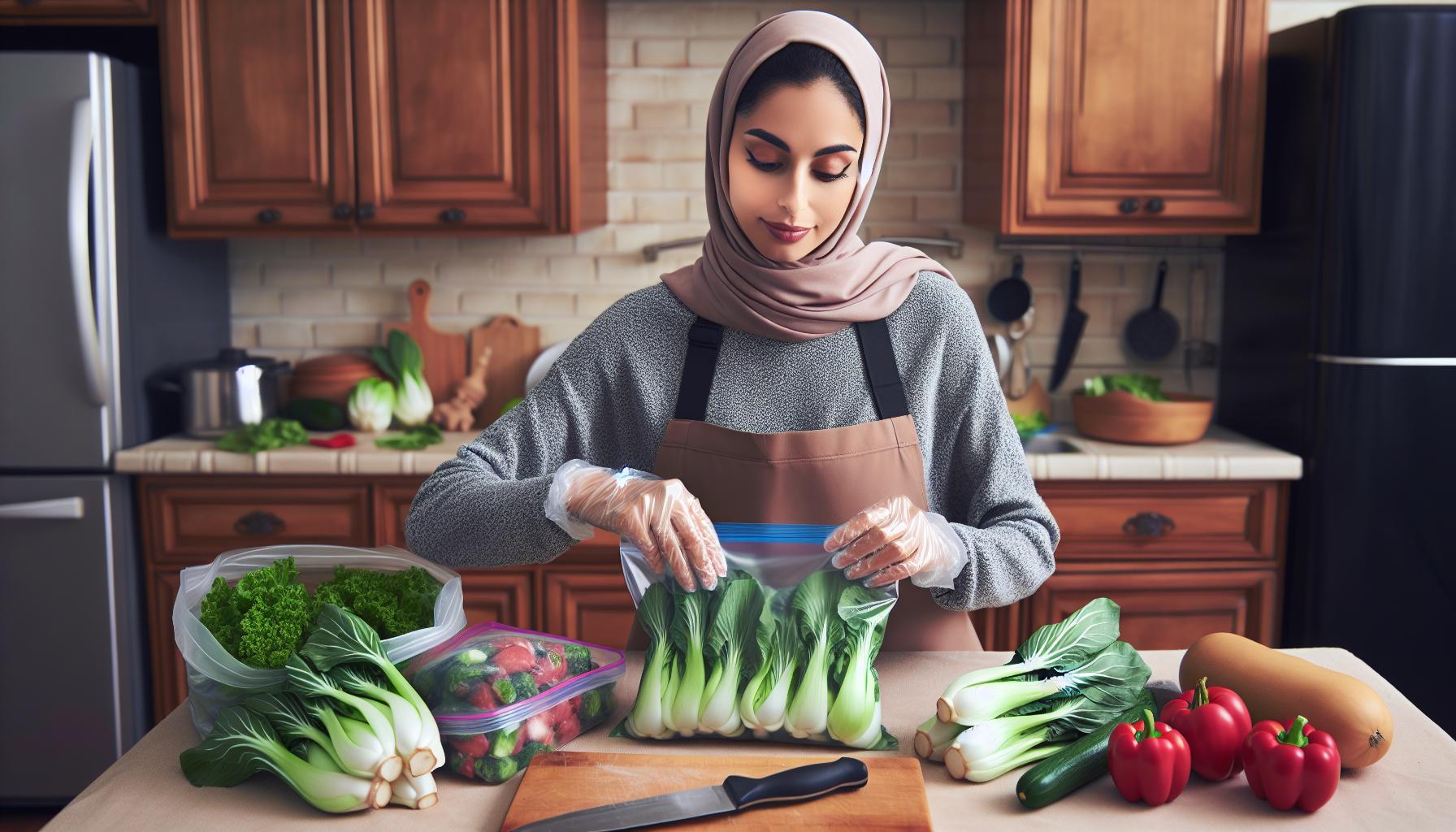Preserving the crisp texture and vibrant flavor of bok choy doesn’t have to be a challenge. This versatile Chinese cabbage can stay fresh for months when properly frozen making it a convenient addition to stir-fries soups and side dishes throughout the year.
Freezing bok choy requires blanching the leaves and stems separately washing them thoroughly patting them dry and storing them in airtight freezer bags. When done correctly frozen bok choy maintains its nutritional value and can last up to 12 months.
While many home cooks shy away from freezing leafy greens bok choy’s sturdy nature makes it an excellent candidate for long-term storage. The key lies in proper preparation and packaging techniques that prevent freezer burn and preserve the vegetable’s distinctive qualities.
“1. Wash and trim leaves
Remove dirt from bok choy leaves under cold running water, gently scrubbing between stems to eliminate hidden soil particles. Cut off the bottom 1/4 inch of the base where the stems connect. Separate leaves from stems to create uniform pieces for freezing.
Inspect each leaf and discard any that show:
- Yellow discoloration
- Wilted texture
- Brown spots
- Signs of decay
Use these cutting techniques for optimal results:
- Slice larger leaves into 2-inch sections
- Keep baby bok choy whole
- Split thick stems lengthwise
- Remove tough stem ends
Pro tip: Pat leaves completely dry with paper towels before moving to the next step. Excess moisture leads to ice crystal formation during freezing.
| Part | Size Guide | Preparation Method |
|---|---|---|
| Leaves | 2-inch pieces | Cut crosswise |
| Stems | 1-inch pieces | Slice diagonally |
| Baby bok choy | 4-6 inches | Leave whole |
2. Cut into desired pieces

Proper cutting transforms bok choy into freezer-ready portions. Large bok choy requires cutting into uniform pieces while baby bok choy offers more flexibility in preparation methods.
Here’s how to cut different sizes of bok choy:
- Separate leaves from stems for regular-sized bok choy
- Cut stems into 1-inch diagonal slices for even freezing
- Chop leaves into 2-inch wide strips
- Keep baby bok choy whole or split lengthwise
- Slice thick stems vertically to ensure consistent freezing
| Bok Choy Type | Recommended Cut Size | Best Uses |
|---|---|---|
| Regular | 1-2 inch pieces | Stir-fries |
| Baby | Whole or halved | Side dishes |
| Large heads | 2-inch strips | Soups |
The cut pieces create optimal portions for later use in recipes. Creating uniform sizes ensures even freezing throughout each piece.
3. Pat completely dry

Thorough drying prevents freezer burn and maintains the bok choy’s crisp texture during freezing. Place the cleaned bok choy pieces on clean paper towels or a lint-free kitchen cloth. Pat each piece gently but firmly with additional paper towels to remove surface moisture. Pay special attention to the stem areas where water often collects between layers.
For optimal results:
- Use multiple paper towels to absorb excess moisture
- Press gently on leaves to avoid bruising
- Change towels if they become saturated
- Focus on stem crevices where water pools
- Air dry for 15 minutes after patting
A properly dried bok choy shows these signs:
- No visible water droplets
- Stems feel dry to touch
- Leaves appear matte rather than glossy
- No moisture remains in leaf creases
Remove any pieces that retain moisture, as these create ice crystals during freezing. Let partially dried pieces rest on a fresh paper towel until completely dry before proceeding to the next step.
4. Pack in freezer bags

Pack prepared bok choy in freezer-safe bags using these precise steps:
- Layer the pieces in a single row to prevent clumping
- Press out excess air from the bag to minimize freezer burn
- Label each bag with the date packed
- Portion control – pack in 1-2 cup serving sizes for easy use
Storage tips for optimal freezing:
- Use heavy-duty freezer bags rated for long-term storage
- Double-bag if storing longer than 6 months
- Keep bags flat during initial freeze
- Stack frozen bags vertically to save space
| Storage Duration | Temperature | Quality Result |
|---|---|---|
| Up to 6 months | 0°F/-18°C | Best quality |
| 6-12 months | 0°F/-18°C | Good quality |
Expert tip: Pack blanched bok choy pieces separately from unblanched ones for different cooking applications. Leave 1/2 inch headspace in each bag for expansion during freezing.
5. Remove air and freeze”
Transfer the flash-frozen bok choy pieces into freezer-safe bags or containers. Press firmly on each bag to remove excess air, creating a vacuum-like seal that prevents freezer burn. For optimal storage, use a straw to suck out remaining air before sealing completely.
Label each container with:
- Date of freezing
- Quantity stored
- Whether blanched or unblanched
- Storage expiration (12 months maximum)
Stack the bags flat in the freezer, maintaining a consistent temperature of 0°F (-18°C). Once frozen solid, arrange the bags vertically to maximize freezer space. Keep the bok choy away from strong-smelling foods, as leafy greens absorb odors readily.
Storage Duration Table:
| Storage Method | Best Quality | Maximum Duration |
|---|---|---|
| Freezer Bags | 6 months | 12 months |
| Containers | 4 months | 8 months |
Leave 1/2 inch headspace in rigid containers to allow for expansion during freezing. Store smaller portions (1-2 cups) separately for convenient meal preparation.



